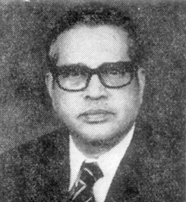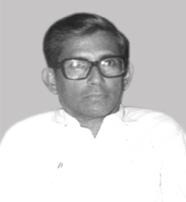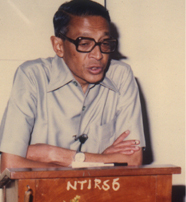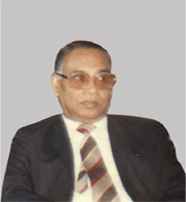4. THE WORK OF TWO DECADES
4.8 The administration
During the two decades under our gaze (1977-1997) six Directors, Drs. NK Menon, A Banerji, P Chandrashekar, GVJ Baily, K Chaudhuri and Dr. BT Uke were at the helm of affairs. Over these years the staffing pattern or the administrative structure did not change (Annexure I). But the NTI underwent several administrative advantages and disadvantages.
The advantages were in the generous nature of the infrastructural development. Several buildings: the hostel facilities for para medical and medical trainees; a whole new block for training; and 48 quarters to house Group “C” and “D” staff were added. To facilitate research work the animal house was built. A well equipped seminar hall and an auditorium to seat 200 people were made operational. Sister institutions like the NMEP, Plague Surveillance Unit of the National Institute of Communicable Diseases (NICD) were accommodated. Accommodation was also provided for a unit of CPWD and Pay and Accounts Officer (PAO). Dr Chaudhuri gave the much required thrust to the publication wing. The pace of computerisation ushered in the early 90s increased, as it must, to take on the information flood and to promote efficient information dissemination.
|
|
|
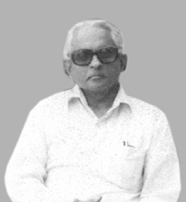 Dr P Chandrashekar 1983* |
|
|
|
 Dr BT Uke 1992-1997** Term of office |
* Term of office
But there were problems too, especially in the areas of equipment and
personnel which became perennial. Import of equipment was restricted to
what was not available in the country and so even the British made landrovers
which were so useful for field work gave way to Indian made diesel vans,
jeeps and station wagons. The biggest disadvantage was the noticeable
absence of WHO experts who were posted during the early years on a more
or less permanent basis. Their presence and collaborative working methods
gave the institution a head start. Many of them, especially Dr Piot worked
in the villages alongside field workers for extended periods. The information
flow from bottom up and top down was easy and informal. This greatly encouraged
team spirit and a sense of commitment to work. Many things that could
not be done by our administrative rules, norms and procedures were overcome
by their interactions or assistance. One example is the Silver Jubilee
Celebrations of NTI – 1985. The WHO contributed handsomely to this.
Hence, it was conducted on a scale a world renowned institution like NTI
deserved. Several posts of key national officers were also not filled
up whenever the incumbent left on transfer or retired: the BCG Officer,
the X-ray Engineer, the Sociologist are some examples. It is said that
a research institution needs a critical minimum mass of intelligentsia
to function effectively. In all fairness, when the WHO withdrew its experts,
action should have been taken to increase the number of national experts
and relevant technical cadres. This could have increased its potential
and encouraged to move in innovative surges. This was a very important
requirement because the country continued to suffer under an ever increasing
TB burden.
Hitherto, the WHO fellowships which sometimes had the advantages of studying in a foreign country, were restricted to the gazetted staff, especially doctors. Dr A Banerji saw to it that this facility was extended to the non-gazetted technical cadres. Mr KT Ganapathy, Jr Statistical Officer, Mrs Bharathi Jones, LT, Mr VV Krishnamurthy, SA were sent to UK, London and Manila respectively under this scheme. Later, Mrs Pramila Prabhakar, Sr Social Investigator and Mrs Sudha S Murthy, Librarian went to UK and USA120. This healthy practice did not continue thereafter. Dr Banerji also initiated action to revise recruitment rules of various cadres. Rigid administrative procedures inhibited implementation of approved versions of recruitment rules beneficial to most technical cadres. The WHO also continued to grant funds for publishing important documents and manuals and assisted in acquiring equipment not available in India.
As narrated in the previous chapter, following the enforcement of the work study team’s recommendations, the staff strength of various categories of non-gazetted staff was reduced and a sizable number were posted out. The truncation of staff in this manner prevented formation of required number of teams for carrying out field work. Further, the recommendations of the expert administrative committee regarding assured career promotion of the staff, was kept in cold storage. Repeated pleas from the staff individually or through their associations did not yield results. The staff morale in those days was so low that in 1985 it casted a shadow on the Silver Jubilee celebrations. In 1988, a far modified version of the expert committee’s recommendations was implemented by Director Dr GVJ Baily which pleased none including a few who were promoted. The posts created at the inception of NTI remained ad-hoc and the newly created ones were on annual renewal. A majority of the staff continued to languish without any promotion in their respective cadres. Perhaps, these along with posting of the gazetted officers of different backgrounds and aptitudes were the key reasons for NTI’s reduced capability to undertake important studies for programme evolution later.
Beginning from 1988, the spectre of Acquired Immuno Deficiency Syndrome (AIDS) appeared. Experts predicted an ever increasing grimness in TB situation. This should have been considered and the required fillip to the NTI should have been given from time to time to promote efficiency. It did not happen. The Five Regional Centres had been recommended by Dr Nagpaul. These would have perhaps increased the pace of training, introduced an effective supervision and boosted TB control activities in their regions. These were not set up. The programme bore the brunt of these lapses. These apart, there were the inevitable budget cuts. Indeed, it is to the credit of the faculty and staff of NTI that it continued to function with a zeal and dedication rarely seen elsewhere.
